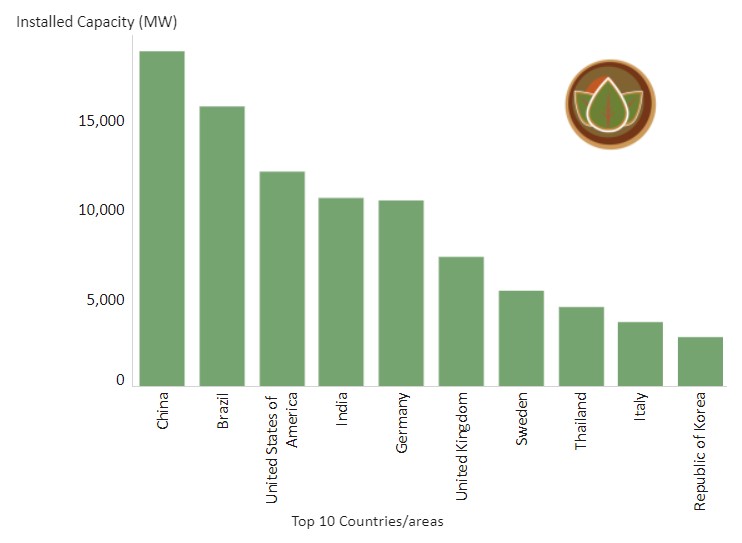Bioenergy is a type of renewable energy derived from biomass, ie plant or animal residues. As a result of the processing of bioenergy, automobile fuel, heat and electricity, as well as various products are obtained.
There are two main categories of bioenergy use:
- Traditional bioenergy - Combustion of biomass in such forms as wood, animal waste and traditional charcoal is referred to as traditional use.
- Modern bioenergy - Liquid biofuels produced from bagasse and other plants; bio-refineries; biogas produced through anaerobic digestion of leftovers; wood pellet heating systems; and other technologies are examples of modern bioenergy technology.

Biomass sources
Biomass sources for energy include:
- Wood and wood processing wastes such as firewood, wood pellets, and wood chips, lumber and furniture mill sawdust and waste, and black liquor from pulp and paper mills
- Agricultural crops and waste products such as corn, soybeans, sugar cane, switchgrass, woody plants, and algae, as well as crop and food processing residues
- Biogenic materials including paper, cotton, and wool products, and food, yard, and wood wastes in municipal solid waste
- Human sewage and animal manure

Biomass to energy conversion technologies
Various methods are used to convert biomass to energy, including:
- Direct combustion
The most prevalent technique for converting biomass to energy is direct combustion. All biomass may be burned directly to heat buildings and water, as well as to provide heat for industrial processes and generate power in steam turbines.
- Thermochemical conversion of biomass
Production of electricity in the form of gas and liquid fuels through gasification or pyrolysis is referred to as thermochemical conversion of biomass.
- Pyrolysis
Biomass pyrolysis produces fuels such as charcoal, bio-oil, renewable diesel, methane and hydrogen by entailing heating organic materials to 400-500°C in the near complete absence of free oxygen.
- Gasification
Gasification entails heating organic materials to 800–900 °C with injections regulated amounts of free oxygen or steam into the vessel to generate a carbon monoxide and hydrogen rich gas called synthesis gas or syngas.
- Transesterification (Chemical conversion)
Transesterification is a chemical process that converts vegetable oils, animal fats, and greases into fatty acid methyl esters (FAME), which are used to make biodiesel.
- Biological conversion
Fermentation to convert biomass to ethanol and anaerobic digestion to create renewable natural gas are examples of biological conversion.
Bioenergy worldwide
According to IRENA's “Renewable Capacity Statistics 2021” report, the world's total installed capacity for bioenergy is 126 GW. China (18 GW), Brazil (15 GW), the United States (11 GW), India (10 GW) and Germany (10 GW) are among the top five countries with bioenergy power in the world.





